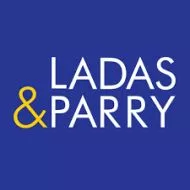Microsoft recently filed complaints in three federal courts against registrants of allegedly infringing domain names, demonstrating an aggressive stance toward the increasingly prevalent and lucrative practices of online trademark infringement and cybersquatting.
The complaints, filed August 21, 2006 in the District of Utah, the Central District of California and the Western District of Washington, name as defendants Jason Cox, and Daniel Goggins and John Jonas d/b/a Jonas and Goggins Studios LLC and Newtonarch LLC; Dan Brown d/b/a Partner IV Holdings; and Jon Does 1-217, respectively. Microsoft asserts trademark infringement and violation of the Anticybersquatting Consumer Protection Act (ACPA), among other claims. Each complaint provides a "representative, though not necessarily exhaustive," list of at least 85 specific domain names registered to the respective defendants that incorporate either Microsoft’s trademarks or misspellings of Microsoft’s trademarks. For example, the complaint naming Mr. Cox lists 324 domain names containing different variations and misspellings of the HOTMAIL, MICROSOFT, MSN and XBOX trademarks, among others, including the microsoftnewssource.com and msninfoonline.com domain names. The defendants allegedly profit from these domain names by diverting Internet traffic to websites containing advertisements and hyperlinks, from which the defendants receive advertising revenue and click-through payments each time a misdirected Internet user clicks on one of the links.
Registrants like Cox, with portfolios of hundreds of potentially infringing domain names, are becoming increasingly common, as opportunities for maximizing click-through advertising revenue heighten the value of high-traffic domain names. The trend of collecting and exploiting high-traffic domain names is reflected in a dramatic increase in registrants or registrars tasting or "kiting" domain names for web traffic volume rather than registering them for long-term web development. According to VeriSign’s most recent publicly available data, 57,521,943 domain names in the .com and .net top-level domains were registered, and 34,223,433 domain names were deleted, in April 2006 alone. In contrast, only one year earlier, the April 2005 report revealed 43,553,261 domain names registered and only 3,236,640 deleted. This huge differential in deletions is a result of the increasing profitability of high-traffic domain names, and, henceforth, an increasing incentive to acquire such domains and cull low-traffic domains from the domain name portfolio. Further, as Dan Warner, the COO of the domain name registrar Fabulous.com advises, the value of a domain name, in terms of click-through earning potential, is partially attributable to its "brand value," or the extent that the domain name is "associated with existing business names, products or popular websites." The recent prevalence of acquiring high-traffic domain names to maximize advertising revenue has lead to a corresponding increase in the registration of domain names that infringe well-known trademarks.
The most common method for trademark owners to combat cybersquatting in the past has been to file a complaint under the UDRP, because of the speed and efficiency with which UDRP disputes are resolved. Microsoft, for example, has filed over 60 complaints to date under the UDRP to recover domain names from various registrants. Although the UDRP is faster and cheaper than federal litigation, the only remedies available to prevailing trademark owners are transfer or deletion of the disputed domain names. Federal litigation under the ACPA, on the other hand, provides trademark owners the opportunity to recover up to $100,000 per domain name in statutory damages, as well as other forms of damages, temporary and permanent injunctive relief, and attorney fees. The UDRP is still an efficient and inexpensive option for trademark owners to enforce their intellectual property rights against registrants with a small number of disputed domain names. Nevertheless, Federal lawsuits under the ACPA, like the Microsoft cases, may prove to be a preferable alternative, as cybersquatters continue to accumulate larger portfolios of valuable domain names that violate the rights of trademark owners.
Furthermore, Neiman Marcus and Bergdorf Goodman recently filed a federal lawsuit in U.S. District Court in the Western District of Washington, alleging that a domain name registrar itself registered domains that infringe the trademarks of the plaintiffs. The novel complaint alleges that Dotster used its position as a registrar to acquire high-traffic domain names, some of which infringed the trademarks of the plaintiffs, along with other owners of well-known trademarks. The suit seeks preliminary and permanent injunctions, as well as statutory damages, corrective action, disgorgement of profits, trebled damages and attorney fees.
With the growing prevalence of click-through advertising and the corresponding increase in the value of "brand" domain names, trademark owners are increasingly faced with new domain name registrations that infringe their rights as trademark owners. Although proceedings under the UDRP have proved an effective option for trademark owners to enforce their rights, comprehensive brand protection requires the contemplation of all options, especially with the limited relief available under the UDRP.
Ladas & Parry LLP’s Digital Brands Practice counsels numerous clients on these issues to develop cohesive and cost-effective enforcement policies ( www.digitalbrands.info). Ladas & Parry LLP’s Internet and Domain Name Watching services are also designed to assist brand owners by identifying and monitoring recent domain name registrations, including those registered by domain tasters, to effect brand protection strategies ( http://tmw.ladas.com/).
The content of this article is intended to provide a general guide to the subject matter. Specialist advice should be sought about your specific circumstances


